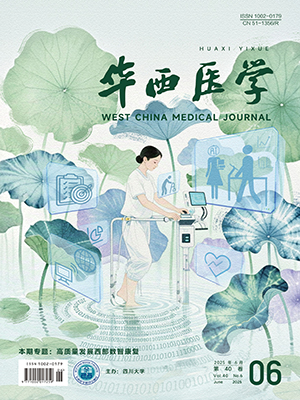【摘要】 目的 评价低场MRI对膝关节半月板撕裂的诊断准确性。 方法 2009年9月-2010年4月经关节镜检或手术确诊的膝关节损伤患者69例,其中35例41个半月板撕裂,回顾性分析、整理其临床、关节镜及MRI表现,以传统Reicher诊断的改良分级标准确定半月板撕裂的级别、形态并记录,同时对关节内其它伴随征象作统计。 结果 35例41个撕裂半月板中,17个为盘状半月板,MRI显示Ⅲa级撕裂信号24个,Ⅲb级撕裂信号5个,Ⅲc级撕裂信号4个,Ⅳ级撕裂信号1个,桶柄状撕裂信号7个。本组低场MRI诊断半月板撕裂的敏感度、特异度、准确度分别为93.18%、92.11%、92.68%。 结论 低场MRI诊断膝关节半月板撕裂与关节镜结果差异不大,是一种诊断半月板撕裂的可靠、无创性检查方法。
【Abstract】 Objective To evaluate the accuracy of low-field MRI in the diagnosis of meniscus tears. Methods We collected the clinical data of 69 patients with knee joint injuries confirmed by surgical operation or arthroscopy from Septembe 2009 to April 2010. Among them, 35 patients had 41 cases of meniscus tears. We retrospectively analyzed their clinical symptoms, and their manifestations on low-field MRI and arthroscopy. According to the modified diagnostic criteria based on Reicher’s diagnosis, the grade and the shape of meniscus tears were determined and recorded, and other accompanying signs inside the joint were also analyzed statistically. Results Among the 41 cases of meniscus tears of 35 patients, 17 were discoid meniscus. MRI showed that there were 24 signals of Ⅲa tears, 5 of Ⅲb tears, 4 of Ⅲc tears, 1 of Ⅳ tears and 7 of bucket-handle tears. The sensitivity, specificity and accuracy of low-field MRI in the diagnosis of meniscus tears were 93.18%, 92.11%, and 92.68%, respectively. Conclusions There is no significant difference between the results of arthroscopy and low-field MRI in diagnosing meniscus tears. Consequently, MRI is a reliable and non-invasive method in the diagnosis of meniscus tears.
Citation: HUANG Wenguang,CHEN Haiyan. Evaluation Studies of Low-Field MRI and Arthroscopy Imaging in Diagnosis of Meniscus Tears. West China Medical Journal, 2011, 26(2): 222-225. doi: Copy
Copyright © the editorial department of West China Medical Journal of West China Medical Publisher. All rights reserved




